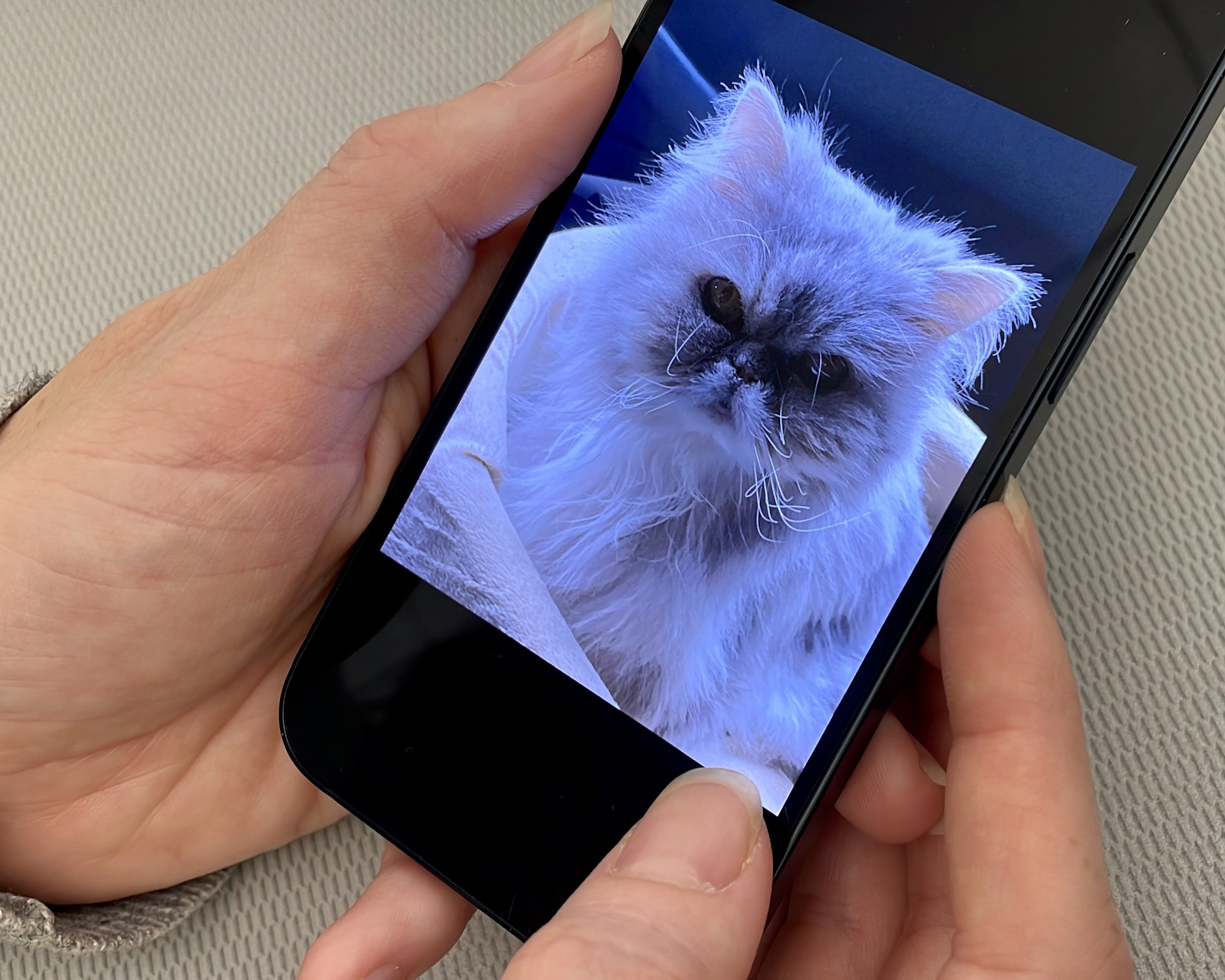The Science & Practice of Coping with Pet Loss
A cuny Journalism School capstone project
By Michayla Savitt | Published December 22, 2022
Pippin the cat. Illustration: H Conley
Author’s note: this project was driven by a loss - in August, my senior cat, Pippin, died of lung cancer. The loss was overwhelming. I rescued him in 2016, and he was the first pet of my own. But the grief felt less valid after just one week, even though I missed him constantly. Not sure where to turn next, I did what any science journalist does — talk to other people feeling that way...and some experts. The result is this mixed media project exploring how loss manifests in the home after a pet dies — and how we remember them even years after they’re gone. This is for anyone who’s missing a pet that’s gone over “the rainbow bridge”.
A warning, these stories may be difficult to listen to or read if you’ve experienced a loss - but you are not alone. You can get emotional support in a crisis by sending a text to ‘741741’ or by calling 1-800-273-TALK. The Humane Society also has resources for coping with pet grief.
Loss is impossible to avoid: It comes in many forms. But when it comes to grief, people are not the only species who can be affected by losing someone close to them.
Still, losing a family animal is challenging for the household. And recent research shows that dogs can experience grief-like symptoms when another household dog dies.
This was the case last summer for Larra Call Waldmann. From May to August, two of her three dogs passed away. First was her pit bull mix, Hercules. He died from bone cancer. Then Gabriela, her Doberman Pinscher, died from heart failure.
Call Waldmann was devastated. And the reaction from her third dog, a chihuahua, was strong. The small dog had shared the home with the other two for many years, and seemed distraught when they passed.
“She stayed in her little bed for days,” said Miami-based Call Waldmann, adding how when they would go on a walk, she’d be reserved. And for months, she slept in Hercules’ large bed.
Hercules the pitbull mix. Illustration: H Conley
This reaction to losing a companion dog is not unique. A study published this year in Scientific Reports found that dogs can display grief-like symptoms after another dog in the home has died. In the study, dog owners reported changes in behavior during activities ranging from play time to meals, and sleep. Owners have reported this anecdotally before.
Co-author Stefania Uccheddu, a veterinarian and animal behavior specialist at San Marco Veterinary Clinic in Italy said behavior changes in a multi-dog household are tied to the social group changing, and their shared daily habits. Another factor could be a response to separation, since attachment is important for survival.
“So any time someone leaves can start a separation time. And in the case of death, it lasts forever,” Uccheddu said.
Data was pulled from surveys completed by 426 adults from Italy who had at least two dogs, one of which passed away. Friendlier relationships between the dogs were found to have much stronger negative reactions to the death.
The study also pointed out that a dog could show grief-like patterns like eating less and fear because of their owner’s mourning process and emotional state.
Gabriela the Doberman Pinscher. Illustration: H Conley
Uccheddu emphasized that while it's important to recognize these results, the reactions can’t formally be confirmed as full-on grief because their emotions are not the same as a human’s.
Leticia Fanucchi, a veterinarian and professor of animal behavior at Oklahoma State University, echoed that notion.
“A lot of those behavior changes that are described by the owners could have been caused by the actual change in the owners’ behavior due to the loss. So animals do respond to people's emotional cues,” said Fanucchi, who wasn’t part of the study.
But this doesn’t discount that for both the companion dogs and owners, that daily confrontation with a pet’s absence and disruption of routines makes an impact. In 2018, over 48 million households in the U.S. owned a dog, and nearly 32 million homes owned a cat, according to a American Veterinary Medical Association report. Yet, with so many pet owners out there, it seems grieving a household pet still doesn’t fit in with society’s attitude about death and dying.
* * *
Last year, Manhattan resident Kat Clary had to put her 22 year-old cat, Marcasite, to sleep. They had spent a decade together. Clary said she had lost people throughout her life, but Marcasite’s death felt different.
“I just assumed that losing a pet wasn't going to be as hard as that. And in some ways, it's harder,” she said. “Because the humans that I've lost, I didn't come home to them every single day.”
Anna de la Paz, a marriage and family therapist in California who treats grief, compared the feeling of a close pet dying to that of losing a child. She emphasized that it’s the care that goes into looking after them, from waking up together, feeding, playing - and all the daily routines that are disturbed.
De la Paz added that the circumstances surrounding the pet’s death can also play into the severity of a person’s grief. For example, owners can feel guilty, if they had to put their pet to sleep.
“A choice to euthanize that can be really difficult, I think, for people to cope with,” she said.
A study published in 2020 analyzed nearly 2400 pet owners’ responses about their experience having a pet euthanized. Researchers emphasized, in part, the importance of giving owners access to grief resources and services.
Change in environment is also a factor for owners. Mirna Fiohetti, an emergency room veterinary technician in New York, lost her family cat, Gizmo, to cancer. And his absence from her parents’ home was striking.
Marcasite the Persian cat. Illustration: H Conley
“A week later I went back to my parents' place and it was definitely hard going there and he didn't come to greet me,” she said. “I broke down in the bathroom, just because of how quiet and lonely the house felt.”
The death of a pet is one of many things that can fall under what’s known as disenfranchised grief, which is feelings of loss that society limits or doesn’t allow a person to express. This phenomenon can arise from a miscarriage, the death of an estranged friend, job loss, and a common one - lost aspects of “normal” life during the pandemic.
“It really gets into that idea that we're comparing somebody's grief to another – whether it's a person or a pet,” De la Paz said. “But it's not just a pet - they’re companions, they’re partners in our household,” she said.
Clary felt she had to move on too quickly when Marcasite died. She said that was from a combination of busyness with work, but also her own perceptions on how to handle the loss.
“I probably brought it up less,” she said. “Maybe because I felt like I was not supposed to bring it up as often as I wanted to.”
But Clary said that with both the loss of Marcasite, and her father’s death just this summer, she felt that she needed to curb her mourning. With the cat, it happened much faster.
A large part of easing the grief comes down to having a support network of people who understand the weight of the loss.
“Being able to find the people who do get it…people who are understanding that this loss is just as big as any other, and being courageous to talk about it, that it does hurt as deeply as the loss of a person,” De la Paz said.
De la Paz echoed that having another pet can help some people with easing the grief for the pet who died. However, the decision to bring a new pet into the home is a complicated one. Fiohetti works with a lot of pet owners and noted that the process varies for each person.
Gizmo the tabby cat. Illustration: H Conley
“You never forget your pet when they pass, even years after,” she said. “But everyone moves on in different ways. Some people I know can't get another pet for the rest of their lives. And I know some people that need to get another pet to help with the mourning.”
There isn’t existing research on how a dog with grief-like symptoms will react to a new animal, and it is probably a case-by-case basis, too. But Uccheddu acknowledged the need to continue studying the topic, and looking at how the issue presents in different cultures around the world.
But for remaining animals in the home, coping is about minimizing distress. Fanucchi says this includes not changing their routine and offering dogs more opportunities to interact socially. Or, leaving the house so they are not stuck inside looking for the other dog.
Uccheddu pointed out one of the things owners can do to help their dogs who might be hurting is just supporting them - just like how people need support.
“There is no help when you are in grief…you don't have a member of your family,” she said. “We just need to recognize that they need time. That's it.”
ACKNOWLEDGEMENTS
Special thanks to Alicia Chang, my capstone project advisor, and Emily Laber-Warren — teachers of important lessons in science and health reporting, journalism and life.
Thank you to H Conley for the time and talent on all of these pet portraits, being a shoulder to lean on and a person to laugh (and cry) with throughout this graduate program.
Endless thank you’s are in order for my significant other, Shai, who was a huge help during this project, and helping me continuously process the loss of Pippin.
And finally, thank you to everyone so bravely willing to share their grief on and off the record with me.
Have a question? Interested in sharing your experience? Feel free to reach out.
Pippin in his favorite spot.








